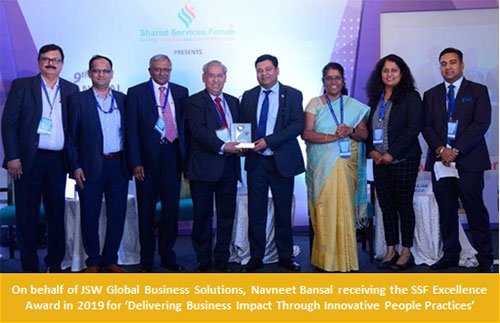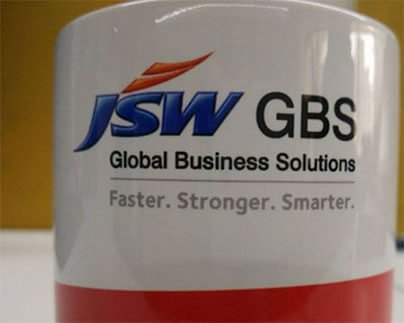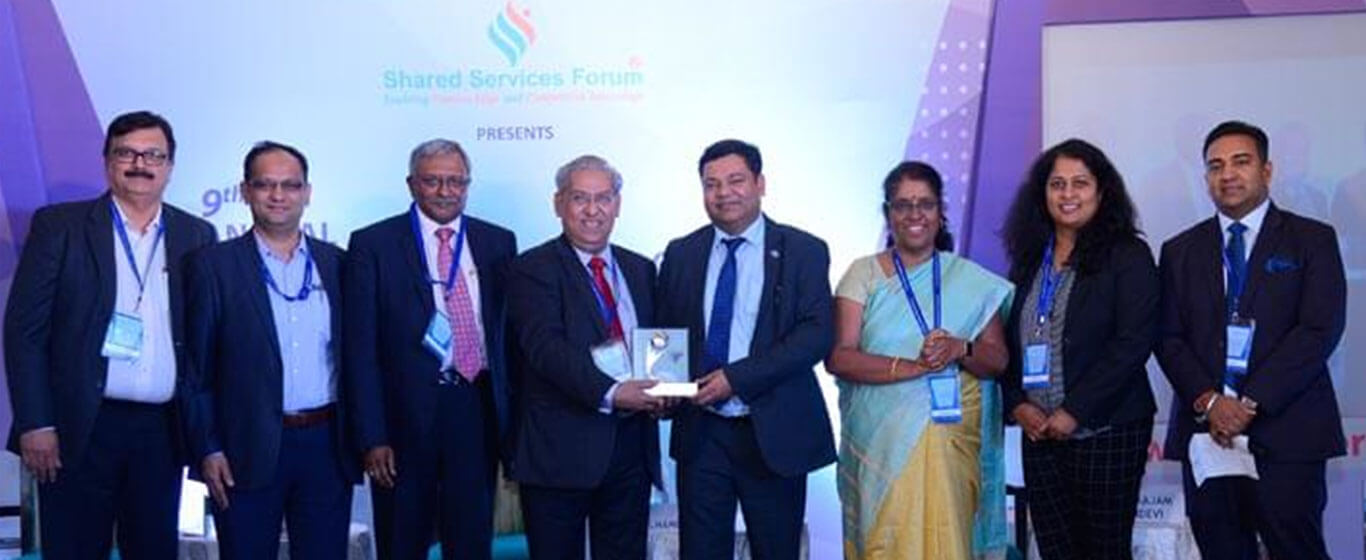Navneet Bansal
Chief Executive Officer, JSW Global Business Solutions
Recipient of Shared Services Forum’s “BPM Achiever in Global India”
Navneet has an expertise in setting up self-sustainable Global Shared Service centres, both captive and outsourced. He is Chartered Accountant and Science graduate with 25 years of work experience.
With a career spanning from the big four consulting firms to global tech companies and now with the largest steel producer in India, Navneet has worked with various international and domestic work cultures. He has been instrumental in setting up four shared Services in his career.

Navneet dislikes status quo. He loves doing new things and experimenting to continuously improve the self and the organization he works for. Under his leadership, organisations have brought in advanced digitisation and robotics in their processes.
A people’s person, Navneet cherishes his age-old professional connections who continue to remain in touch, despite choosing different career paths, humbled to be playing a role in their professional lives.
Navneet actively participates and contributes at industry conferences and seminars to gain and share experiences. Has been a speaker on multiple industry forums like SSF Global, IIMs, other institutions nationally as well as internationally.
The Conversation
SSF: How has the Shared Service delivery model changed in the past few years?
Navneet: Shared Services organizations have evolved from the early 1990s of cost reduction to a process-based structure, and subsequently, to the hybrid models that combines diverse functional activities into a holistic integral unit, reflecting a shift from cost to a value focussed agile approach. The new Shared Services and GBS have included operational practices that were previously thought to be impossible. Some of these include:
- Remote working i.e., processes are no more location dependent
- Complex processes delivery - feasible through shared services organizations
- Addressing risks requiring more than BCPs and full automation
- Adopting agile technologies - possible with the right level of support
Today, as many businesses are operating remotely, an effective shared services model is more important than ever with a focus on the ability to adapt and be agile to opportunities & threats. There is a shift from a decentralised operating model, where teams report into respective chief officers, to a centralised model where all the functional teams report to Centralised Global shared services. Speed, faster time to support customers, economies of scale and clear communications among employees and stakeholders, are some of the benefits of this operating model.
Shared Service organizations are working towards increasing virtual work, expanding scope in remote delivery models, revamp BCPs, automate and enhance security, and build greater business resiliency to help be better prepared for any future crisis and thrive.
Covid-19 has presented yet another set of fresh challenges to businesses across the globe and changed the way Shared Services operate. New and transformative technologies were rapidly entering the workplace even before the pandemic, enabling businesses to innovate and thrive in an increasingly digital world.
....a captive Shared Service can be as cost competitive as professional outsourcing companies, if managed well.
But then 2020 happened, and what was supposed to take years to happen, took only a few months, forever changing the way services are carried out.
SSF: What is the one big initiative taken up at JSW GBS to deliver game-changing performance in the last one year?
Navneet: We believe, a captive Shared Service can be as cost competitive as professional outsourcing companies, if managed well. Additionally, it provides a lot more flexibility to drive growth and manage exceptions without adding cost. We have carried out a detailed market study to ascertain our competitiveness in terms of cost and digitization parameters. Based on this market study, JSW GBS has initiated massive digital drives to bring in automation and introduce processes like Touchless Invoice processing, Auto Reconciliations and Touchless Compliances, to name a few. JSW GBS is well on its to become best-in-class, both in terms of cost as well as digital transformation.
SSF: How has ‘digital’ enabled your organization to deliver improved business impact? Please share an example.
Navneet: Digital transformation has been key in responding to the disruption of work and business ecosystems, and most businesses ramped up their efforts to meet this sudden change. According to Dell’s Digital Transformation Index 2020, 80% organisations fast-tracked their digital transformation programs in 2020. In addition, 89% said that the pandemic highlighted the need for a more agile and scalable technology environment. JSW has been no different and is on a fast growth journey.
Managers have struggled more than twice as much as executives when it comes to maintaining a sense of belonging, and they feel more stressed and less productive than their more-senior colleagues.
Our digital roadmap has a three-fold objective:
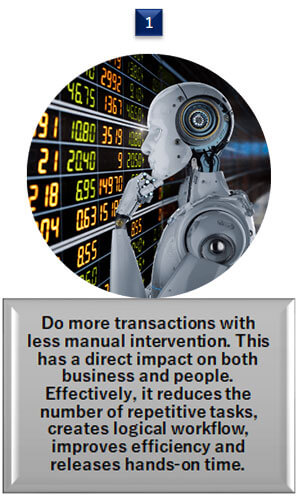
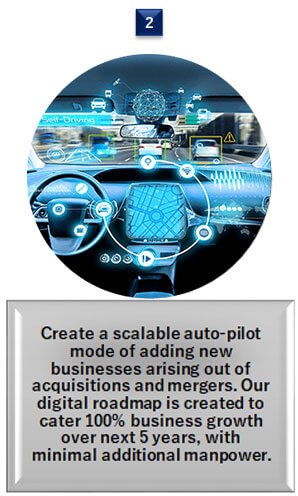

There are several examples of functional automation initiatives taken up at the GBS to make running the business easier by our customers. For instance, tools that can provide a digitized working platform for calculating sales commission on a real-time basis and helps the Sales team to plan much better to achieve their targets. Another area is in the payables process where we have automated expense reimbursement for employees, helping save valuable time for them.
SSF: Initially, managers held the knowledge; now the systems do. How do we make the shift in the culture to adapt and also train people, especially middle managers, to manage the human and personnel workforce mix?
Navneet: As organizations shift toward more distributed, asynchronous workforces, the traditional role of a middle manager — monitoring productivity, optimizing individual performance, etc. — is becoming increasingly redundant. A global survey of over 3,000 remote knowledge workers by HBR, reveals that middle managers (defined as those managing 1-6 people) are 46% less satisfied with their jobs than senior executives (those managing at least 15 people).
The managers have struggled more than twice as much as executives when it comes to maintaining a sense of belonging, and they feel more stressed and less productive than their more-senior colleagues. The good news is, we have been successful at implementing strategic and practical people practices resulting in employee satisfaction and significant business impact. In 2019, JSW GBS was recognized by SSF Global for the strategic deployment of innovative people practices. middle managers still have a key role to play — that role just needs to evolve. For decades, middle managers have been human routers: tracking project status, moving information across teams, and serving as intermediaries between junior employees and senior leaders. In a remote work context, this communication is harder than ever, but the tactics that will be most effective in managing it have changed. As digital tools enable the freer, more democratic flow of information, the need for managers whose sole job is to route information between the top and bottom of the company, has reduced drastically; thus, leaving them free to focus on something that is infinitely more important than transmitting information: building teams and connecting the people that are the true lifeblood of any organization. Middle layer managers are no longer internally focussed, people managers. Process managers are becoming business managers. They use analytics to convey their messages to clients and senior stakeholders. They have taken a role of extended members of core businesses. They are partnering with businesses while talking to vendors/ bankers/ customers.
SSF: Business controls have moved from direct supervision and authority to observation, trust and independence. Have you noticed such a change? How are you channelizing it?
Navneet: There is definitely a reduction in direct supervision and authority. But largely, the reason for same is increase in invisible controls through system and better processes. Trust and independence are functions of an organization’s culture which have a direct impact on decision making, innovation, creativity, motivation. With increasing realisation that traditional controls may have been stifling, leaders of today are allowing more of a free hand to the employees to take quick and confident decisions. Companies become agile and flexible by making this a part of their corporate culture.
Channelising forces to promote this culture is a long-drawn program. Organisations invest significant amount of time and resources in training and other interventions, not only on the domain and technical knowledge, but also on soft engagement skills. Employees are encouraged to think of the organisation as an extension of their families. While mentoring and hand-holding are a part of the training program, so is the assurance that experimentations and innovations, even if failed, are expected and rewarded. Once systems such as these get imbibed within the corporate DNA, companies can generate immense competitive advantage.
SSF: What will the Shared Services of the future look like? What will they deliver beyond providing a fixed portfolio of support services?
Navneet: Shared Services has been synonymous with back-office operations for long. However, as the times are changing, so is the perception about Shared Services. More and more companies are now looking at Shared Services as their key strategic drivers for change management. The future Shared Services will increasingly adopt emerging technologies like process digitization, robotics and artificial intelligence. Beyond a fixed portfolio of support services, now Shared Services are centrally providing business analytics and driving digital transformations across the enterprise. With the help of technology, Shared Services can now provide deep business intelligence through industry benchmarks, which company Boards are more and more leveraging for their strategic initiatives.
While some companies are already doing it, progressively over next few years, key business decisions would begin to emanate from Shared Services. With mammoth talent and analytical data under their direct control, they would be in a position take faster and smarter business decisions. Some companies have started talking about leveraging Shared Services to drive
community welfare programs and key project management initiatives in their front-end businesses. In terms of services, Shared Services will look into becoming centres of excellence and establish industry best practices. For example, if there are FP&A processes that needs specialisation, enterprises will build internal capability in terms of experts and environment to conduct projects, process audits, reporting and compliance within their Shared Service units.
SSF: Can Robotics become a real threat to the workforce?
Navneet: This may be true in some cases, but fortunately not in ours. We are leveraging robotics to manage expansion and growth. We foresee no threat to the exiting workforce. However, we are using this opportunity to continuously drive the message within our teams that they need to be multi-skilled. We are helping them through aggressive job rotation and upskilling programs.
Automation takes the burden of repetitive, manual tasks off the team’s hands. This not only frees up time, but it also reduces the likelihood of human errors. It also boosts productivity and efficiency. Additionally, removing repetitive work can empower and enable people to perform and with a higher sense of worth. So, the team will not only be more productive and efficient, but they may even produce better work.
Robotics/ automation leads to the generation of valuable data around processes and allows IoT systems to improve operations smartly and sustainably, which can attract immense growth and profits. It provides everything needed for business growth without compromising with the service quality or volumes or employees’ career growth. In fact, it adds much more than one can think of. Robotics is not likely to be threat to the future workforce too. Only the nature of jobs will change. Our education system needs to be 10 years ahead of our future job market needs. If we are able to do this, we are good.
Upskilling/ reskilling is the highest priority in addressing current talent shortages witnessed by most enterprises. Companies see their existing employee base as a key source from which their talent requirements can be met.
SSF: How are services professionals being reskilled to get ready for the future? What are progressive enterprises doing about it?
Navneet: Upskilling/ reskilling is the highest priority in addressing current talent shortages witnessed by most enterprises. Companies see their existing employee base as a key source from which their talent requirements can be met.
Some enterprises have started to progressively implement the following 4 strategic steps to adapt their workforce to the future of work:
1. Create a long-term roadmap
Develop a comprehensive workforce strategy that addresses the work and skill that will be new, displaced, disrupted, and enduring in the future.
2. Design new roles
In employee-centred job redesign program, the workforce plays an integral role in identifying what their jobs could look like in the future. The workforce’s input is critical in understanding what higher value work they could be doing instead of their routine, repetitive work activities. Workers’ involvement helps them understand that their job is not being eliminated but that it is changing to focus on more strategic, value-add, and human work. Additionally, this supports workforce alignment to activities that employees are interested in and that utilize their strengths, thus achieving a higher-performing workforce.
3. Train for new roles
Staff should be reskilled in essential human skills, such as decision making and influencing others as well as domain knowledge, technical skills, and how to work with and optimize the digital technologies that are now part of their work. Staff members that were previously performing transactional activities such as data entry or error research will require new skills for their new work. In addition, the new work and workforce will bring new supervisory roles. Managers will need to be trained on basic managerial and leadership skills as well as learn how to manage a blended human-technology workforce.
The workforce will require new methods of training that enable them to build their knowledge and skills constantly by supporting the learning needs of the future of work.
4. Manage the staff of the future
Leaders will need to manage a blended workforce of human and digital workers. Human workers will need to be focused on problem-solving, providing customer support, and performing quality control for the results of digital workers. Additionally, human workers will be needed to apply their knowledge and skills in multiple areas, on a short-term basis, instead of a singular transactional area for an extended period of time. Much of the new work will require essential human skills as workers perform more knowledge-based and customer-facing services.
SSF: How can organizations ensure that they have the right skills for the future when they don’t even know what they are going to need?
Navneet: It is not right to say that organizations don’t know their future needs. I believe we have a reasonable understanding of the next decade or so. We know that the skills needed in the future will be durable and broad – like problem solving and the ability to work with fluid teams. If one can develop agility in the organization to tackle the leading-edge business, the more discrete, recognizable skills can easily be imbibed, as required.
The name of the game is flexibility and adaptiveness. We are training people on multiple jobs and investing in technology. Technology will not change everything overnight.
So long as people and leaders are sufficiently multiskilled, they should be safe.
SSF: Are Shared Services likely to remain the key BCP centres for the organisations?
Navneet: Pandemic has changed the rules of the game. Organizations not only look for better cost models for their Shared Services, but also to make them agile and BCP ready. They do not mind investing funds in making them technologically advanced and nimble. Organizations are now more conscious about their Business Continuity Plan and are looking at Shared Services to become back-up centres for those roles which used to be managed by corporate HQs.
Shared service centres are increasingly becoming the hub for designing and managing the BCP plans for the companies. The one clear indication is that for all staff functions and non-shop-floor operations activities, a relatively simpler BCP is evident – work from anywhere. Now that physical proximity is no longer required, none of the traditional options for DRP/ BCP site are needed. These new, ‘softer’ options are best understood and coordinated by the Shared Service units of companies.
Shared service centres are usually best suited for such central initiatives largely due to their bird’s eye-view on:
- The organization's operating environment
- Corporate risk assessment, risk valuation and mitigation strategies
- Controls and related policies and procedures
- Information systems and communication methods
- Activities to monitor performance
Shared Services can bring in excellence at all levels of operations simply by making the tasks, processes and functions professional.
